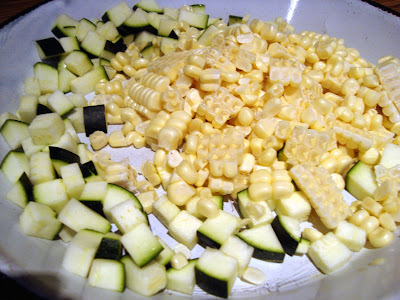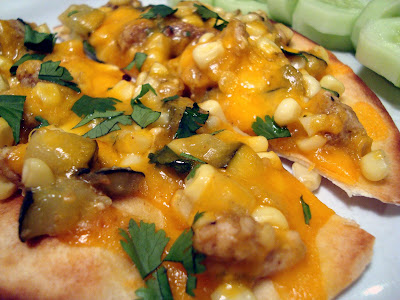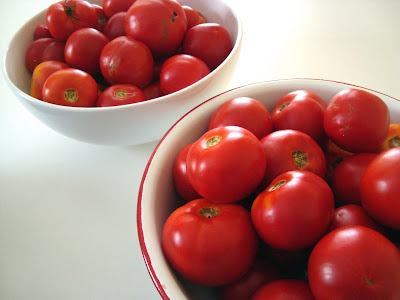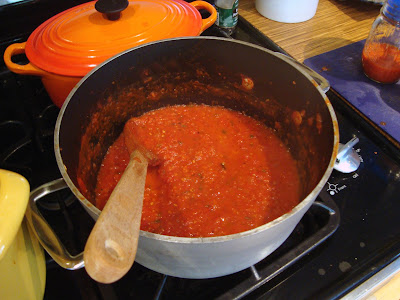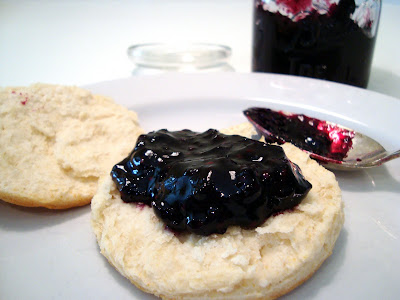The filling for this recipe can be used in two ways. You can use it to make the tostadas, or if you don't feel like going as far as toasting the tortillas, you can simply spoon the filling into soft flour tortillas and enjoy as is. I prefer it in the form of a tostada because I like the crispy texture and slightly charred taste that come from broiling the tortilla.
It begins with chicken that is cut into small chunks, seasoned with cumin, and browned in a skillet. Zucchini and corn are then added along with some salsa verde. After several minutes of cooking, the mixture is placed on a flour tortilla that has been under the broiler for a short time making it slightly crisp. Cheese goes on top, and the whole thing is put back under the broiler to finish it up.
When the tostada comes out, it is crunchy, browned on the edges, and topped with gooey melted cheese which is holding all of the vegetables in place. Sprinkled with a little chopped cilantro and cut it wedges, it is ready to eat in less than 20 minutes which is perfect if, like me, you tend to be a little lackluster in your desire to cook on weeknights. I like these served with beans or (as I did several nights ago) with chilled cucumber slices doused in vinegar.
I will also give you a heads up and say that if you try these and like them, you should stock up on zucchini and corn to freeze so that they can be made throughout the winter. I chop zucchini and corn and freeze the correct amounts together in a freezer bag. When I want tostadas, the vegetables are ready to go with no prep at all. The filling is also delicious without any chicken. Just increase the amount of veggies and add the spices directly to them in the skillet.
Chicken and Vegetable Tostadas (adapted from Cooking Light)
makes approximately 4 tostadas
1 teaspoon ground cumin
1/4 teaspoon salt
1/4 teaspoon black pepper
2 teaspoons canola oil
8 ounces chicken breast, cut into small pieces
1 1/4 cup fresh corn kernels (about 2 ears)
1 1/4 cup chopped zucchini (about 1/2 a medium zucchini)
1/2 cup salsa verde (homemade or store-bought)
3 tablespoons chopped fresh cilantro, divided
4 (8-inch) flour tortillas
Cooking spray or more canola oil
1 cup shredded cheddar cheese
Place tortillas on a sheet pan and spray each one lightly with cooking spray (or you can brush them very lightly with oil). Place the pan under the broiler for 2-3 minutes until the tortillas are lightly browned and beginning to puff up. Remove the pan from the oven. Spoon 3/4 cup filling into the middle of each tostada and spread it around. Sprinkle each with 1/4 cup cheese and place the pan back under the broiler for an additional 2 minutes to melt the cheese and brown the tortilla. Watch them carefully as they burn easily and quickly. Remove the pan from the oven, cut each tostada into four wedges and sprinkle with the remaining cilantro.

